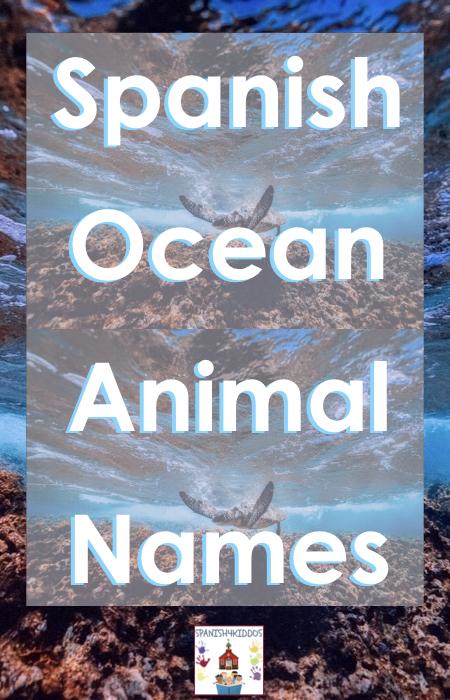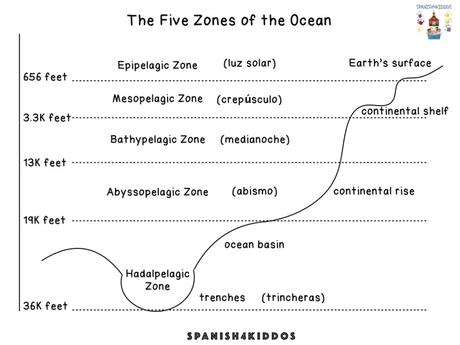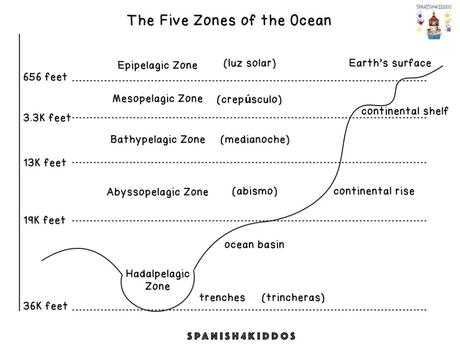
Ocean animal names in Spanish is the ideal way to introduce more than habitats of the ocean. Imagine a world that lives beyond the surface of Earth.
That is, the sea is the wondrous place where children can learn about sea creatures, ocean zones, and keeping the waters clean. While your lessons contribute to the learning of vocabulary or writing practice, include themes to help you develop a more comprehensive education.
With ocean themes, you can efficiently structure materials to support children as they learn about sentence structure, letter recognition, and reading.
Depth of Ocean Zones
Understanding the ocean zones or layers conveys a better image of the span of the fantastic ocean. While there are differences between temperature and pressure, animals continue to flourish in that type of environment.
What would happen if there are extreme temperatures and pressures? Most animals may adapt to changes.
On the other hand, other animals survive in different types of zones. You might be familiar with the Epipelagic Zone or the Sunlight Zone (luz solar or luz del sol). At this level, plenty of light radiates from the surface into the water. The zone lies between 656 feet and the surface.
While there is very little pressure, abundant heat and adequate sunlight provide excellent conditions for photosynthesis. Within this zone, you find coral reefs and green plants. Also, human activity is prevalent in this area; for example, swimming, boating, and fishing are everyday activities.
Next, the Mesopelagic Zone or the Twilight Zone (crepúsculo) lies beneath between 656 - 3K feet below. Although some sunlight passes through, you can find swordfish and eel.


Prevailing Darkness Into Deeper Ocean
Going deeper into the ocean, you encounter the Bathypelagic Zone or the Midnight Zone (medianoche). As the dark zone, this level lies between 3K - 12K feet below. As the name suggests, very little light passes through, and the pressure increases to about 5K pounds.
For example, a wide variety of species of sea creatures inhabit the area along with sperm whales and other whales. As the ocean waters go deeper, you experience frigid temperatures and pressure.
At this point, as the Greek meaning of 'no bottom' tells, you discover the Abyssopelagic Zone or the Abyss, Abyssal zone (abismo). In the Abyss zone, no sunlight enters the layer and darkness dominates. For instance, about a quarter of the ocean floor exists along with the continental rise.
Further, basins and trenches begin to form. Then, the Hadalpelagic Zone or The Trenches (trincheras) is the last layer between the ocean basin and below. Between 19K - 36 K feet, the trenches are a place of freezing temperatures, high pressure, and no sunlight.
Sea explorers require special equipment to observe the area. The ocean layers go deeper into the sea; the pressure increases, and light decreases.
Ocean Animal Names in Spanish
- blue whale = ballena azul
- orca = orca
- octopus = pulpo
- coral = coral
- goldfish = pez de colores
- fish = pez, pescado
- algae = algas, alga marina
- sea horse = caballo de mar
- dolphin = delfín
- sea turtle = tortuga del mar
- starfish = estrella del mar
- crab = cangrejo
- shrimp = camarón
- manatee = manatí
- oyster = ostra
- stingray = mantarraya
- sea lion = león marino
- jellyfish = medusa, aguamala
- squid = calamar
- shark = tiburón
- lobster = langosta
Lesson Planning with Ocean Animal Names in Spanish
Use various methods to show the ocean zones and types of animals that live there. By implementing sea themes with ocean animal names in Spanish, you can use the zones to distinguish different habitats.
Of course, coral reefs are the most common habitats. Take the opportunity to expand that knowledge. For instance, use a model or chart of the different zones and suggest ways to find ocean animals.
Don't let the learning stop there. Use various colors of blue and dark blue to indicate the depth of the ocean. In this way, young learners can use ocean animal names in Spanish along with ocean layers.
Other ways to utilize an ocean zone chart and ocean animal names in Spanish are through crafts, science experiments, and storytelling. The imagination is endless when it comes to combining Spanish animal terms with reading, writing practice, and general science.

